2020 Production Diary: Poetry in America Season 3
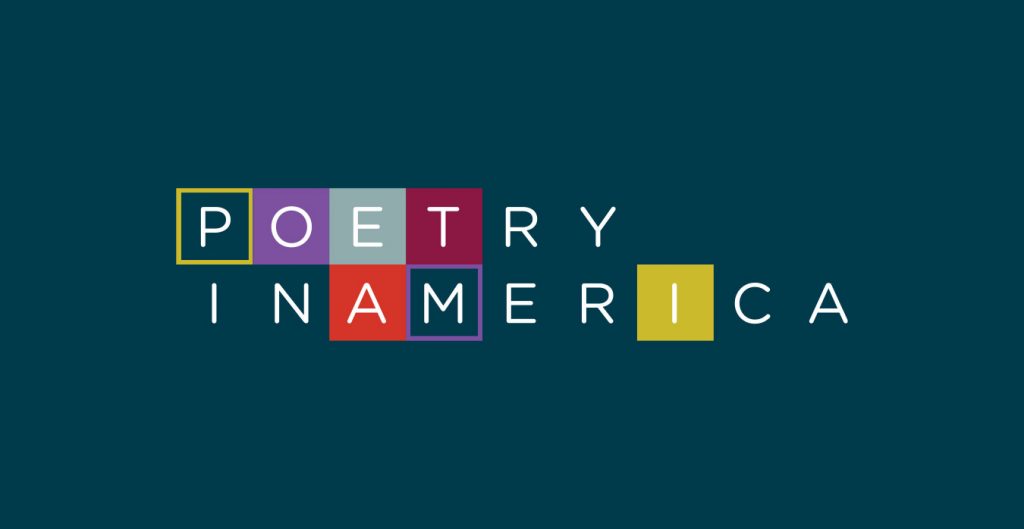
Read below to hear from our Communications Intern Gideon Leek, a senior at Oberlin College. Gideon, an English and Politics major, has been the voice behind many of Poetry in America’s posts on social media since April 2020, tweeting remotely from his house in Ohio.
After a busy summer, Gideon recently caught up with Poetry in America Producer Cathleen O’Connell and Director of Photography Steven Allardi — learning about creative methods the production team has used to film Season Three safely during the pandemic.
2020 Production Diary:
Poetry in America Season Three
by Gideon Leek
Poetry is best when read together. A good poem opens itself to a variety of interpretations and requires a variety of interpreters. Not to access some more profound truth, but to appreciate the plethora of impressions a text creates. Poetry in America in presenting readings of modern & classic American poems accesses a breadth of perspectives from all walks of life (both in the writers and the readers). Everyone from poets, to athletes, to scientists, to comedians, to politicians, to musicians, is given time to speak on what they make of the poems presented. These conversations allow viewers to broaden their thinking on each poem, access perspectives beyond their own, and thereby to foster empathy and understanding.
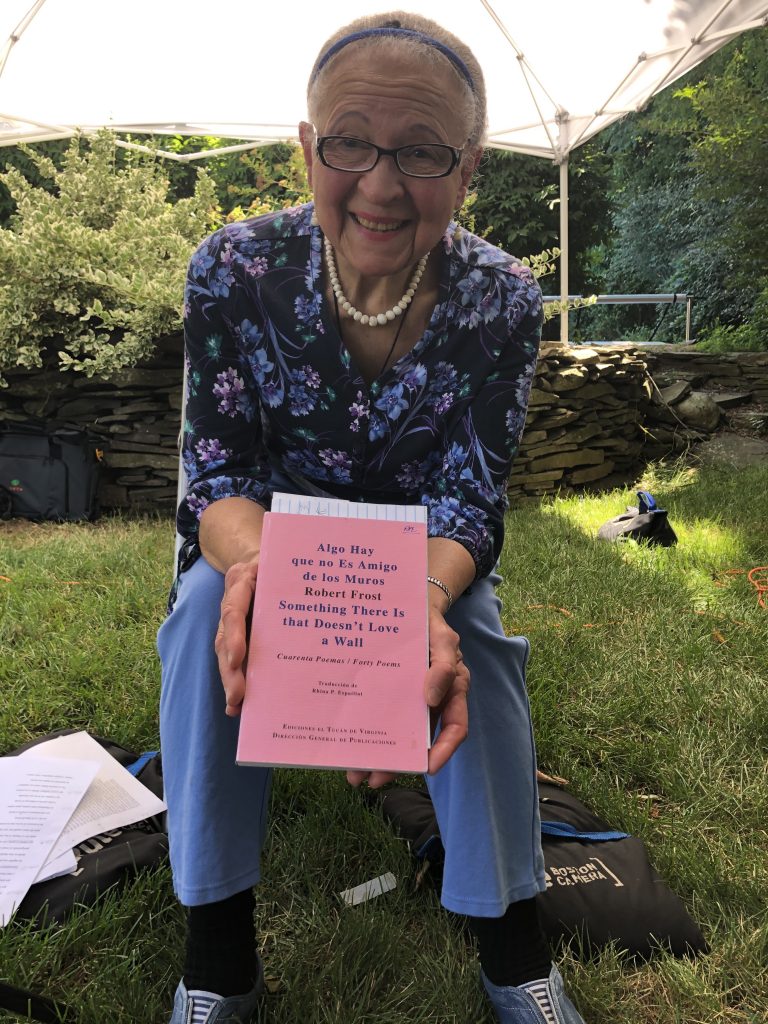
Pictured: Season 3 Guest poet Rhina Espaillat during a socially distanced shoot, holding her translation of Robert Frost.
Yet, a global pandemic requiring social distancing has posed a fundamental problem for the show’s upcoming third season — how to bring this robust show to home viewers while keeping everyone involved with the production safe? It was never an option for Poetry in America to close itself off to interviews or to present only one authoritative reading of a text to the viewers. Something had to be done.
And it was. Poetry in America has been filming Season Three — from a distance. Cameras have been dangled out of helicopters, hidden within conspicuously large hats, maneuvered through the deepest oceans and the darkest caves by interns with the vaguest understanding of drone flight etiquette, and sent in the mail to guests for them to film themselves. Only the last one of those is true, but such options would have been considered in poetry’s time of need.
Cathleen O’Connell, Poetry in America’s producer, spoke at length about the process of socially distant filming. Her two directives in order of priority: ensuring the safety of the interview subjects and crew, and preserving aesthetic continuity. Host Elisa New has been filming for Poetry in America in various formats since 2015. Therefore, many of the interviews that will appear in Season Three were shot prior to the pandemic. This leaves the production team with the goal of making the new interviews, filmed with manifold additional challenges, fit in with the old.
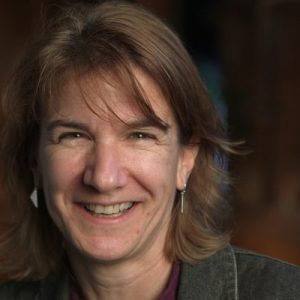
Pictured: Cathleen O’Connell, Producer of Poetry in America
The production team’s first challenge is distance. Poetry in America’s film crew is accustomed to traveling to meet guests, wherever in America they are. But during the pandemic, if they want to avoid hotel stays, the two- to three-person crew can only film in-person if they can drive, film, and drive back to Boston in one day. The days can be long; a recent shoot in Vermont involved a 4 am departure and a 10 pm return.
The crew’s second challenge is more logistical. As O’Connell says: even in normal times, “[one of the] hardest things on shoots, [are] where people are gonna go to the bathroom, what will they eat, and where will they park.” Unable to share food, with limited takeout options, and with even fewer restrooms, meeting basic needs on a shoot is easier said than done.
Finally, their third challenge is technical. The crew is used to shooting with three cameras, with one at a wide-angle to capture both Elisa and her guest sitting together; now, O’Connell and their crew capture each person separately, enabling everyone to sit farther apart.
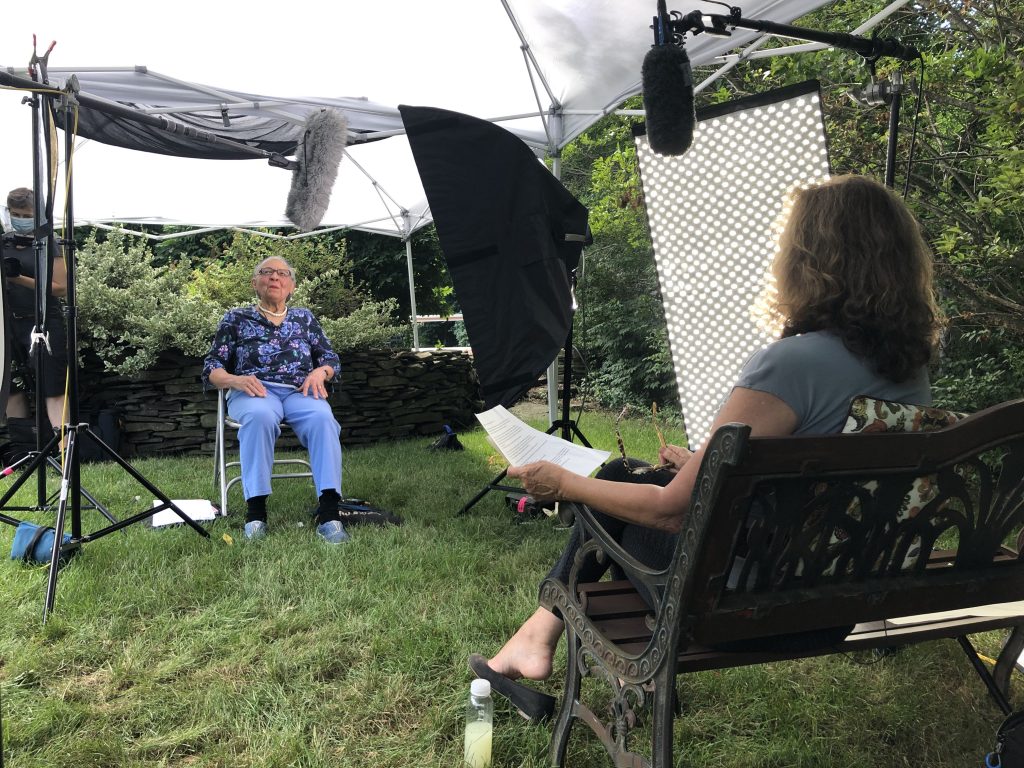
This summer, Poetry in America has relied on many of our guests to volunteer their backyards as a space for outdoor filming. Pictured: poet Rhina Espaillat and host Elisa New.
Socially distant filming must also be done outdoors, making it crucial to film at an hour where there’s natural light. And on the audio side of things: lav microphones are typically fastened to talent by professionals. But in 2020, (as if interpreting classic American poems weren’t hard enough!) our multi-talented guests have been asked to fasten their own microphones to their own shirt collars.
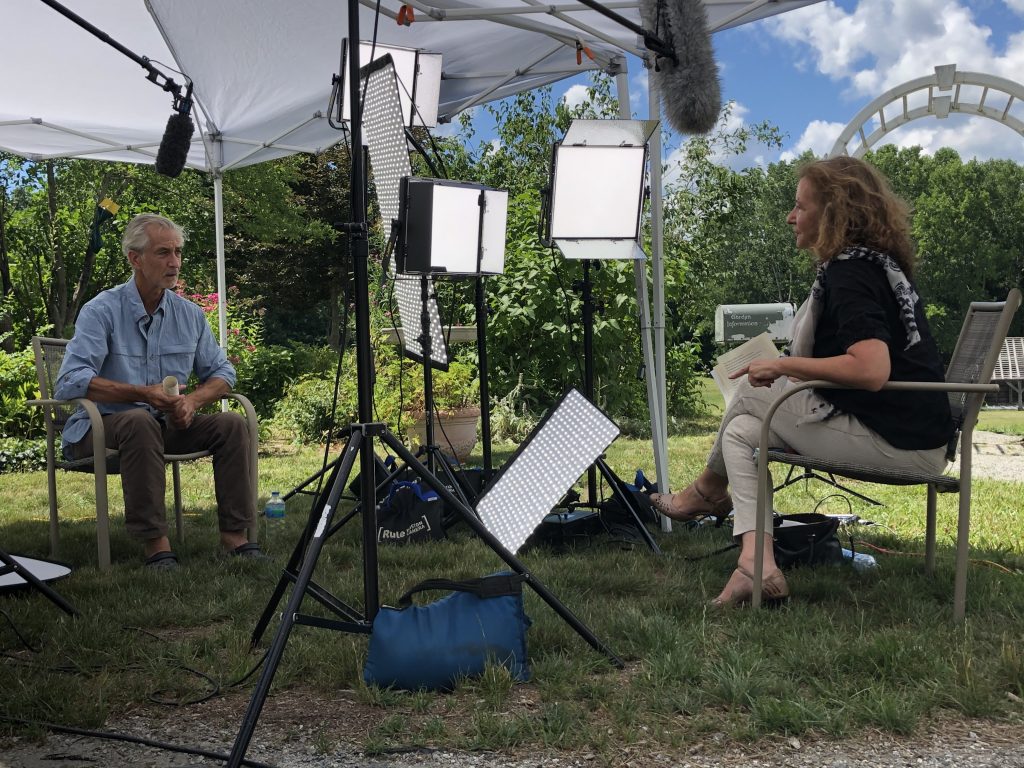
Pictured: Actor David Straithairn and host Elisa New at a socially distant shoot.
Despite the challenges of socially distant filming, this method still involves professionals using sophisticated equipment, which provides the crew with a high level of control over focus and sound. But filming those guests more than a four-hour drive away required a different technique. Enter Poetry in America Director of Photography Steve Allardi, who spoke at length about the development and deployment of our remote filming plan.

Like many in media, Allardi (smiling above) was tasked with coming up with a workable method of filming remotely, in a way that was respectful of both the amateur status of the guests and the aesthetic aims of the show. Unlike many, Allardi was quarantined through March and April with his engineer son, in a house equipped with many whiteboards.
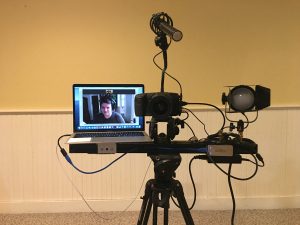
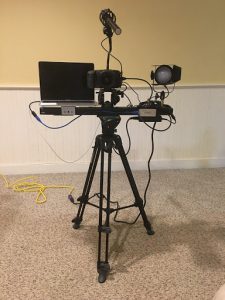
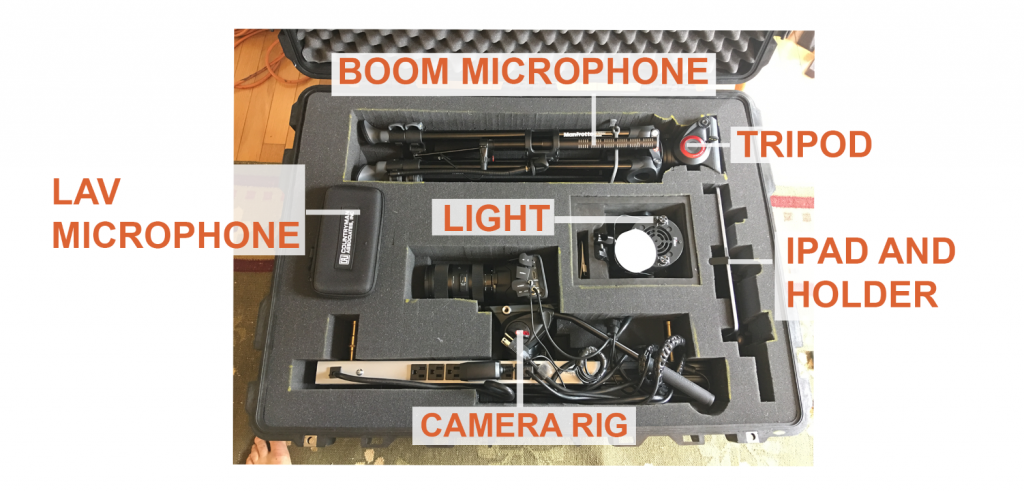
The result was a user-friendly camera kit (see above), with high sound and audio quality and only medium weight (60 pounds). The camera design is centered around an extruded aluminum rail onto which a camera, a laptop, a boom mic, and an LED light are attached. Each time the crew must conduct a shoot remotely, Allardi disinfects the entire camera kit, collapses it into a box, and sends it to the guest in the mail.
After walking their guest through the 30-90 minute set-up (what O’Connell describes as “the closest thing possible to plug and play”), Allardi, O’Connell, and New get on a Zoom call with the guest to check that mics are not capturing excessive background noise, to ensure the camera is in focus, and most importantly, to discuss poetry!
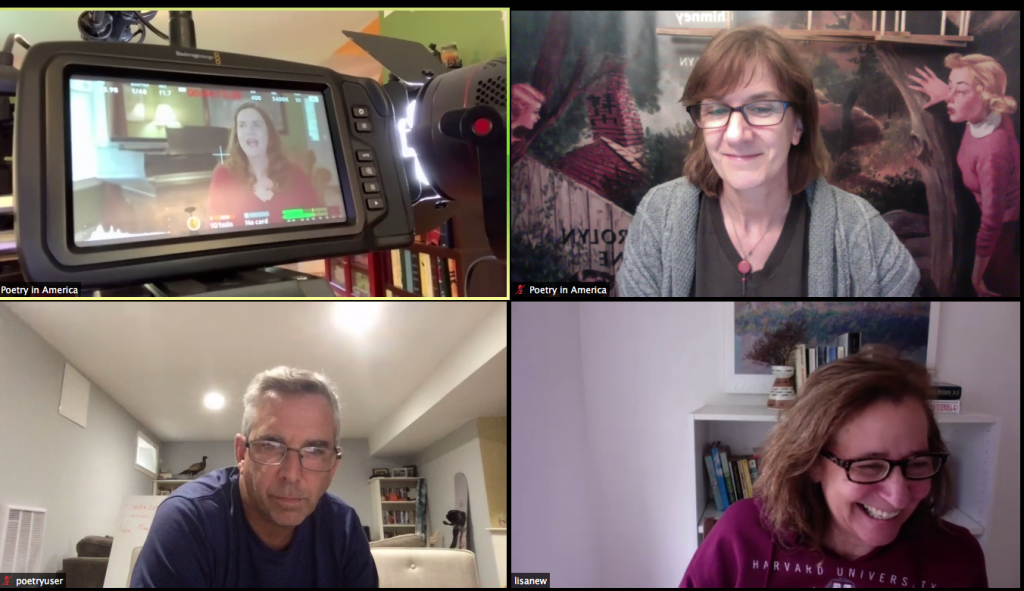
Pictured: Clockwise from upper left: Donna Lynne Champlin, Producer Cathleen O’Connell, Creator and Host Elisa New, and Director of Photography Steven Allardi.
Of course, in this remote work environment, there’s also time for a little fun. Allardi claims that some guests have gone a little rogue with the remote camera kit, filming eclectic “extras” of their own… Fans will have to tune in to see if any of these quarantine extras make their way into Season Three!
Today was an unusual day! Set up a home studio & filmed @PoetryInAmerica w Elisa New. Deeply enjoyed discussing Ammons' poem Cascadilla Creek – involves conflict btwn the inaccessible scales of universe and our human efforts. Brought in a bit of @MissionToPsyche. pic.twitter.com/GpElK1egqz
— Lindy Elkins-Tanton (@ltelkins) August 28, 2020
I had so much fun doing this remote shoot with @PoetryInAmerica. Special shout out to some exceptional camera and sound work by @andrewsarrow. 👏👏👏 https://t.co/HVoP5Sx7ys
— Donna Lynne Champlin (@DLChamplin) August 8, 2020
